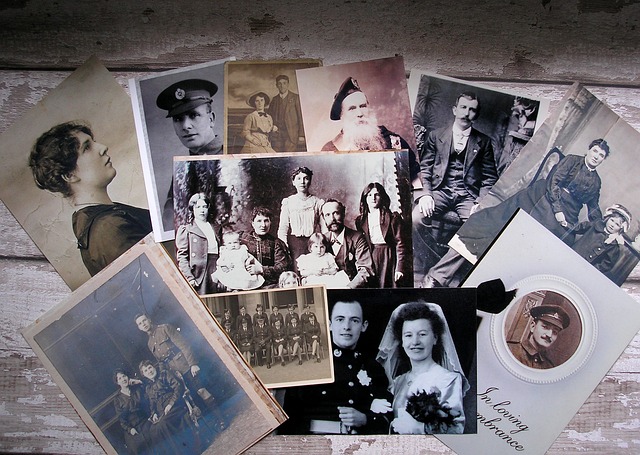Several years ago I borrowed my parents’ book History of the Descendants of Jacob Gochenour and got sucked into a passion I’ve never been able to escape: genealogy. I was never very interested in my ancestors but when I started reading that book, I was up until after 2:00am.
As a seventh generation descendent of Jacob Gochenour, the stories and photos of my ancestors captured my attention and prompted me to search other branches of my family tree. According to the book, the early Gochenours came to the United States in the 1730s from Gruningen, Switzerland. I’ve had the privilege to visit that town and dine in one of its restaurants that was built in the 1500s.
Genealogy has become more popular and today you can benefit from much research by participating in various online groups. Many have also submitted salvia samples to discover their countries of origin, relatives, and more.
Although Americans seem to have a greater interest in this discipline, the Jewish people have been experts at it for thousands of years. Anyone who has read the Bible has encountered numerous genealogies not only in Genesis and Chronicles, but also in the Gospels.
Jewish identity, land allotments, priestly assignments, allowable marriages and other aspects of Jewish life were all tied to one’s family. It was crucial to know who came from whom and where each belonged. In addition, to meet the qualifications established by the prophets, the Messiah would have to come from David’s line.
Because so much of Jewish life revolved around one’s ancestry, these records were kept meticulously and stored at the Temple in Jerusalem. Scribes were assigned the responsibility of examining and updating these records as needed.
It’s no surprise that King Herod who slaughtered all the baby boys in Bethlehem also burned the genealogical records. He wanted to eliminate the possibility of anyone using their descent as a claim to be a savior.
What Herod could not eliminate were the memorized records etched into the minds of every Jew. Because so much depended on this information, most individuals could verbally trace their lineages back to Abraham.
Consequently, whether from written record or oral memory, both Matthew and Luke include genealogies of Jesus’ parents. Matthew traces His line back to the founding patriarch, Abraham, while Luke goes all the way back to Adam.
Both generational lists amaze modern genealogists and both illustrate clearly that Jesus is descended from David and has the necessary bloodline to fulfill all the prophecies. Even Herod could not cancel Jesus’ ancestry.
The fact that Jesus came in David’s line is but one of over 300 prophecies about the expected Messiah that He fulfilled. Researchers have determined that the odds of one person fulfilling just eight such prophecies would be essentially zero.
To illustrate how unlikely this is, imagine covering the entire state of Texas with silver dollars piled two feet deep. Using a marker, write your initials on one of the coins and mix the entire mass thoroughly. Blindfold a friend and allow her to travel wherever she likes and then select one coin. The odds of that coin being the one you marked are close to those of one person fulfilling just eight of the specific prophecies about the future Messiah.
As more prophecies are added, the odds diminish significantly as to become mathematically impossible. Fulfilling 16 of the prophecies would require a sphere of coins with a diameter 60 times the distance of the earth to the sun. And we still have over 200 more prophecies to add.
Even though Herod tried to prevent this Child of prophecy and destiny from ever existing, Jesus came anyway! And He lived, loved, taught, died, and rose again with victory over both life and death. Christmas is the celebration of when this special Child put on human flesh and entered our world. May all marvel at His genealogy, worship at His feet, and receive Him as Lord and Savior!
Merry Christmas, George
